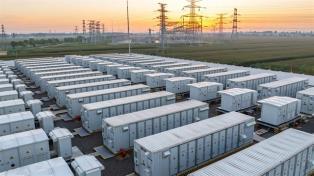Việt Nam has set its sights on double-digit growth. But without structural reform, momentum alone will not take it there.

HÀ NỘI — At the Government's online conference with provincial authorities on 16 July, the Ministry of Finance presented two scenarios.
The first scenario targets an annual growth rate of 8 per cent in 2025. Under this projection, if GDP growth in the third quarter reaches 8.3 per cent year-on-year, in line with the trajectory outlined in Resolution 154, and fourth-quarter growth hits 8.5 per cent – 0.1 percentage point higher than the base scenario – Việt Nam’s GDP would exceed US$508 billion by year-end, with per capita GDP surpassing $5,000.
Key growth drivers for the second half of the year under this scenario include total realised investment across the economy at roughly $108 billion, retail sales and consumer service revenue (at current prices) growing by at least 12 per cent, and total import-export turnover for 2025 rising by 16 per cent or more. The average consumer price index (CPI) is expected to remain within the 4.5–5 per cent range.
In the second – more ambitious scenario which the ministry recommended, the economy projects annual GDP growth of 8.3 to 8.5 per cent. This would require third-quarter growth of 8.9 to 9.2 per cent year-on-year – 0.6 to 0.9 percentage points higher than in the first scenario – and fourth-quarter growth of 9.1 to 9.5 per cent, or 0.7 to 1.1 percentage points above the base case. Under this trajectory, Việt Nam’s GDP would exceed $510 billion by the end of 2025, with per capita GDP reaching over $5,020.
The main growth levers in this scenario include total realised investment of approximately $111 billion, retail and consumer service turnover rising by at least 13 per cent, and import-export value growing by 17 per cent or more. CPI projections remain unchanged at an average of 4.5 to 5 per cent.
According to the ministry, alongside capitalising on market opportunities to boost consumption and exports, investment remains the key engine of growth – one that still holds considerable room for expansion. Stronger investment inflows in the second half of 2025 are expected to not only elevate growth in the short term but also lay the foundation for new productive capacity, creating space for the economy to achieve growth of 10 per cent or more in 2026.
In the first half of 2025, GDP rose 7.52 per cent – the strongest first-half performance since 2011. Exports increased 14.4 per cent to $219.83 billion. Registered FDI reached over $21.5 billion, up 32.6 per cent year-on-year, according to the General Statistics Office.
“These results show that Việt Nam is moving ‘against the wind’, maintaining strong momentum," said Deputy Prime Minister Nguyễn Chí Dũng.
Yet ambition alone is not enough.
“If we do not adopt new steps or bold approaches, we will never reach these goals,” Dũng added.
Despite impressive gains, Việt Nam has never achieved double-digit growth. Its long-term average remains around 6.4 per cent. Structural challenges, particularly in productivity and institutional effectiveness, continue to constrain progress.
Dr Nguyễn Sĩ Dũng, former deputy head of the National Assembly Office, described the current moment as a strategic turning point: “The world is changing rapidly – climate change, digital transformation, geopolitical disputes. Countries that adapt quickly and reform their institutions will rise. Those that hesitate will be left behind.”
Việt Nam's labour productivity growth is a case in point.
According to Dr Đặng Đức Anh, deputy director of the Central Institute for Economic Management, average productivity rose from 4.53 per cent (2011–15) to 6.05 per cent (2016–20), but dropped again to 4.67 per cent in the 2021–24 period.
“The pace of improvement is slowing. Our application of science, technology, and innovation remains limited,” Anh added.
Emerging sectors such as clean energy, semiconductors, AI, and advanced materials remain underdeveloped. Meanwhile, traditional drivers, like low-cost manufacturing, are losing momentum. The economy still relies heavily on assembly and raw processing, while high-value segments like design and R&D remain weak.
“These structural weaknesses, if not addressed decisively, will weigh down Việt Nam’s ambitions,” said Đức Anh.
Institutional reform is widely seen as the cornerstone of a new growth phase.
“Institutions are the operating system of the economy,” said Nguyễn Sĩ Dũng.
“Short-term growth can come from capital or labour. But sustainable, innovative growth depends on transparent, effective, and fair institutions.”
He argued that Việt Nam must begin with a mindset shift, adding: “Reform is not just about passing laws. It’s about building a governance system that is strategic and adaptive.”
From the business community, Đậu Anh Tuấn, deputy secretary general of the Việt Nam Chamber of Commerce and Industry (VCCI), emphasised two priorities: shift from pre-approval to post-audit governance and improve policy execution.
“If growth targets are tied to local officials’ KPIs, we will see clearer progress, even in the short term,” Tuấn said
The energy sector illustrates the stakes. According to Vũ Tú Thành of the US-ASEAN Business Council, Việt Nam should remove capacity quotas in its power plan and allow direct power purchase agreements (DPPA) across clean energy sources.
“This would unlock investment and strengthen energy security,” he said, adding that Việt Nam has the potential to lead growth in Southeast Asia. But to realise that potential, it must move decisively. Double-digit growth is within reach, but only if reform keeps pace with ambition. — VNS





